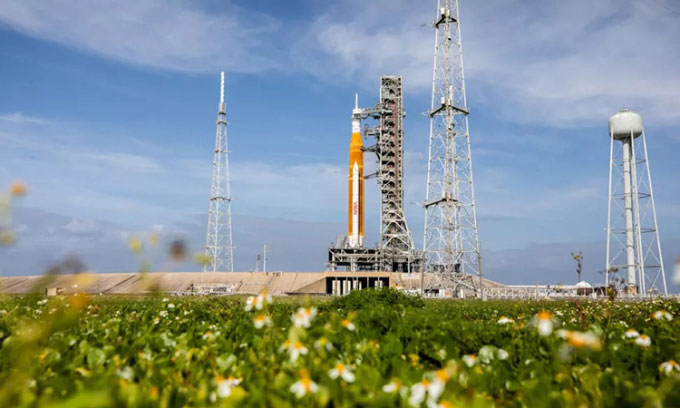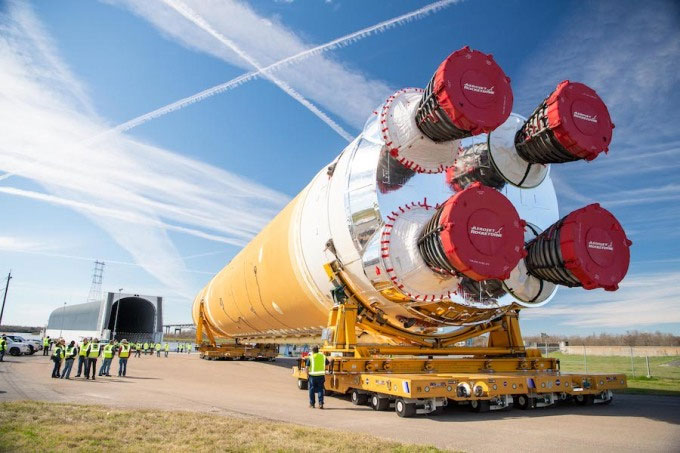NASA’s Giant Space Launch System Set for First Liftoff Next Month in Artemis Moon Mission.
NASA is gearing up to launch the Artemis program, aiming to return humans to the Moon after five decades. In a press conference on July 20, the agency announced that it plans to initiate the first phase of the mission, named Artemis-1, by the end of August or early September.
The exact launch date will be announced about a week in advance. NASA is considering three potential windows: 8:33 AM on August 29, 12:48 PM on September 2, and 5:12 PM on September 5, Eastern Daylight Time.
Artemis-1 will mark the first flight of the Space Launch System (SLS) in an uncrewed mission lasting between 4 to 6 weeks, including at least 6 days in a distant retrograde orbit (DRO) around the Moon.

SLS rocket at Kennedy Space Center in Florida during a test in June 2022. (Photo: NASA)
Atop the rocket will be an empty Orion crew module. According to Artemis mission manager Mike Sarafin, the primary goal of this mission is to test Orion’s heat shield. This structure will need to withstand temperatures equivalent to half that of the Sun as the spacecraft re-enters Earth’s atmosphere.
NASA plans to recover Orion after the crew module lands in the ocean for thorough analysis of the equipment’s wear and tear before allowing astronauts to use it in future launches.
The next phase, Artemis-2, will be the first crewed flight of the mission, sending astronauts around the Moon without landing on its surface.
Artemis-3 will see astronauts land at the lunar south pole, with the goal of establishing a long-term base there.

Core stage of SLS being transported from New Orleans to Mississippi. (Photo: NASA)
The success of the mission will depend on the performance of the SLS. According to NASA, this is the most powerful rocket ever built. When equipped with the Orion crew module, the system stands at 98 meters tall, taller than the Statue of Liberty.
Although slightly shorter than NASA’s Saturn V rocket, used in the Apollo missions of the 1960s and 70s, the SLS is significantly more powerful, capable of delivering approximately 4 million kilograms of thrust, which is 14% more than the Saturn V’s 3.4 million kilograms.


















































